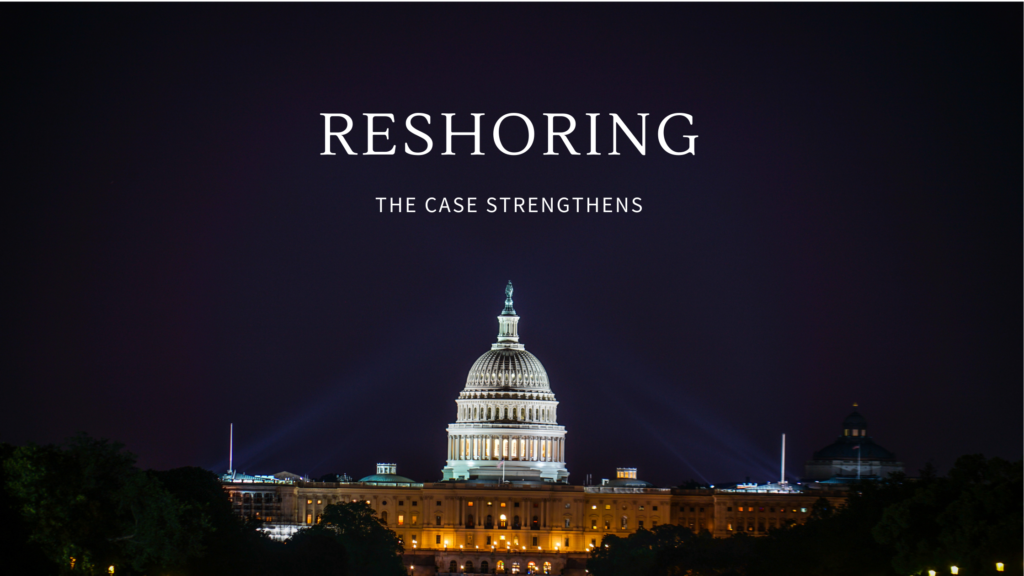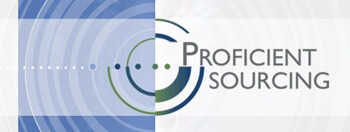
Several important current news factors support reshoring manufacturing as a high priority for the US. Among these factors are efforts to raise the minimum wage to $15, supply chain risks for critical items such as medical supplies, semiconductors, rare earths, and employment difficulties throughout the economy. All these strengthen the case for a robust manufacturing sector. So what to do?
As we all know, for decades the private sector has shipped a great deal of manufacturing overseas. As a consequence, the US lost it’s century-long position as the world’s #1 manufacturer to China. There have been many unfortunate results to the US, all in pursuit of cheap labor and temporary increased profits. Evidently, the US developed the rare earth industry via the Mountain Pass mine in California. Now rare earths, so critical for everything from televisions to military hardware, are a near monopoly of the Chinese. Similarly you will surely recall the mess finding suitable supplies of personal medical goods at the outset of covid. It turns out a great many pharmaceuticals and personal protective equipment has been outsourced—again to China.
Molded metal technologies—foundries, die casting, mold making, machine tools, and other similar things have been again outsourced to first Japan, then China as well as other Asian countries. Fortunately most of them are friendly. But how about China? Friend, foe, or something in between.
“According to the office of Sen. Chris Coons (D-Del), the US has lost more than 5 million manufacturing jobs and more than 70,000 plants have either shut down or moved overseas in the last 20 years”. This from the 3/23/21 Tube and Pipe Journal’s excellent “Reshoring Manufacturing a Priority” article.
Our last newsletter outlined some thoughts concerning efforts to increase private-public enterprises to focus efforts on specific manufacturing areas. This may be a very good thing, or conversely, not so much. The extent to which the central planning smell of such efforts results in Edsels instead of iPhones will tell that tale. One thing for sure is there is a need to make these collaborative efforts more public in order for more companies to participate.
In the meantime and for us smaller entities, there are a number of things that come to mind that might help. Reshoring for those questioning overseas supply chain items is certainly one thing to consider. The advantages of handy manufacturing suppliers cannot be overemphasized. Speed of delivery, elimination of foreign intellectual theft and onerous regulations, and the end to most shipment complexity are but a few.
The Reshoring Initiative is an organization established to help companies interested in reshoring. One of their most useful tools is the Total Cost of Ownership Estimator, which is available free from a dropdown on the Reshoring Institute’s home page. Here’s the “elevator speech” for this tool:
“Most companies make sourcing decisions based solely on price, oftentimes resulting in a 20 to 30 percent miscalculation of actual offshoring costs. The Total Cost of Ownership (TCO) Estimator is a free online tool that helps companies account for all relevant factors — overhead, balance sheet, risks, corporate strategy and other external and internal business considerations — to determine the true total cost of ownership. Using this information, companies can better evaluate sourcing, identify alternatives and even make a case when selling against offshore competitors”.
To enrich interest in reshoring to the US, here are some factors that might help stimulate US manufacturing, and us small companies in particular. Talent availability, tax policies, R&D connections, and general regulatory sense are a few. Another factor is the abundance of cheap energy, at least at present. Energy disruptions of any magnitude are rare here, not so much in some other countries. When your suppliers are handy (and reliable!) and externals such as energy cost and stability as well as tolerable regulations are all acceptable you have a good starting environment for manufacturing success.
Currently there are employee shortages throughout the economy, and manufacturing is no exception. The government seems most interested in immigration of poor and unskilled people coming largely from Central America. Providing some refuge is a worthy policy point. But Trump’s merit-based immigration surely also makes sense. Why isn’t this pursued? More STEM individuals made available would surely help! Raising the minimum wage might also encourage some immigration, and ease the labor shortage. Maybe.
During our consulting years we discovered a number of agencies in the Cincinnati and Northern Kentucky area that dealt with things like sheltered industries, the blind, and others who would have great difficulty competing in the normal hiring situation. Perhaps your business, currently in need of employees, could create positions that some of these types of people could fill. One helpful thing is that tax advantages await some of these hires! If anyone in the greater Cincinnati area finds this worthy of further exploration, please let us know via our blog and we’ll see if we can find the old research and pass that along with updates.
The Tube & Pipe Journal cited above listed a couple of tax items that might be useful for some. Your tax advisors should be able to flesh out your eligibility for either of these:
Section 41. The Research and Development (R&D) Tax Credit has evolved continuously since its introduction in the 1980s to combat offshoring. It has since been made permanent to bring back and introduce more technical jobs in the U.S. One success story involved a manufacturer that was able to claim $1 million in federal and state tax credits for four years’ worth of qualifying projects
Section 179D. The Energy-Efficient Commercial Buildings Deduction was made permanent early in 2021. Those who make energy-efficient improvements to commercial buildings can qualify for this deduction, which allows building owners to receive up to $1.80 per square foot in deductions for eligible projects. Because the average warehouse is 16,400 sq. ft., this could equate to a deduction of $29,520.
These are just a few ideas on the subject of stimulating manufacturing, and specially reshoring. Please let us know your thoughts via our blog.

